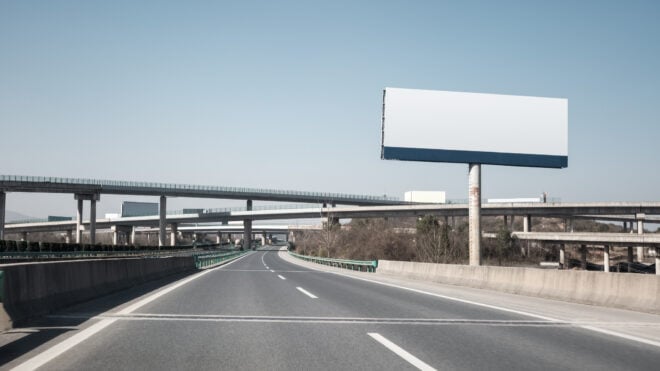It's no secret that after a long day on your feet, especially if you're not wearing the right shoes, your feet are not happy. But for many, foot pain and issues are way more than the occasional soreness.
One of the most common foot ailments, especially among women, is the bunion. A bunion is a protruding bump of bone just under the big toe on the edge of the foot. It's most commonly found in people who wear ill-fitting shoes or very high heels, which can cause a number of other health issues, as well.
For some, it can merely be unsightly, but for many others, it can be painful, making it difficult to walk, stand for long periods of time, or get shoes to fit comfortably. It can also cause people to become insecure with the appearance of their feet.
Bunions aren't uncommon, but many people don't know that it's actually possible to manage the condition right at home; many think the only solution is surgery.
Surgery is an option for more extreme cases, but most cases can be managed right at home with a little planning and know-how.
Check out some bunion-managing tips below, and even if you don't have bunions, consider starting up a care program for your feet. They do a lot for you!
Cover images via Amazon, Wikimedia Commons
What Is A Bunion?
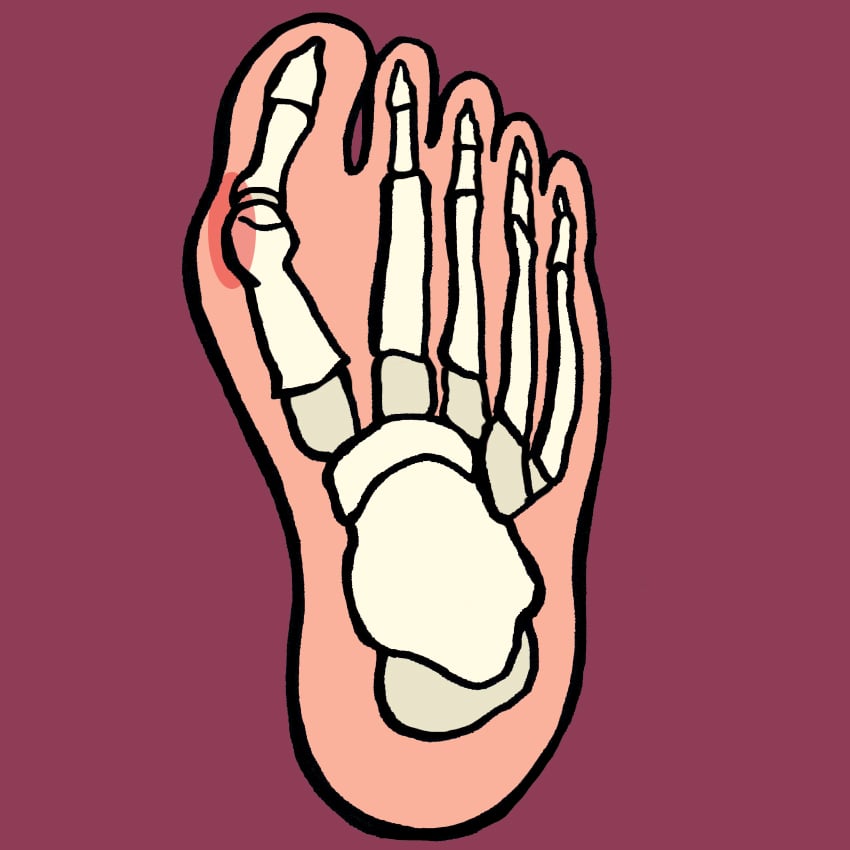
A bunion is a deformity of the joint between the big toe and the foot, where the joint bends outward and protrudes, while the big toe is forced inward, toward the other toes.
A common misconception is that a bunion is an excess growth of bone tissue, but it's not! It's just the joint sticking out too far.
Besides the bony bump, other symptoms can include irritated skin over the bunion, soreness, and blisters.
What Causes Bunions?
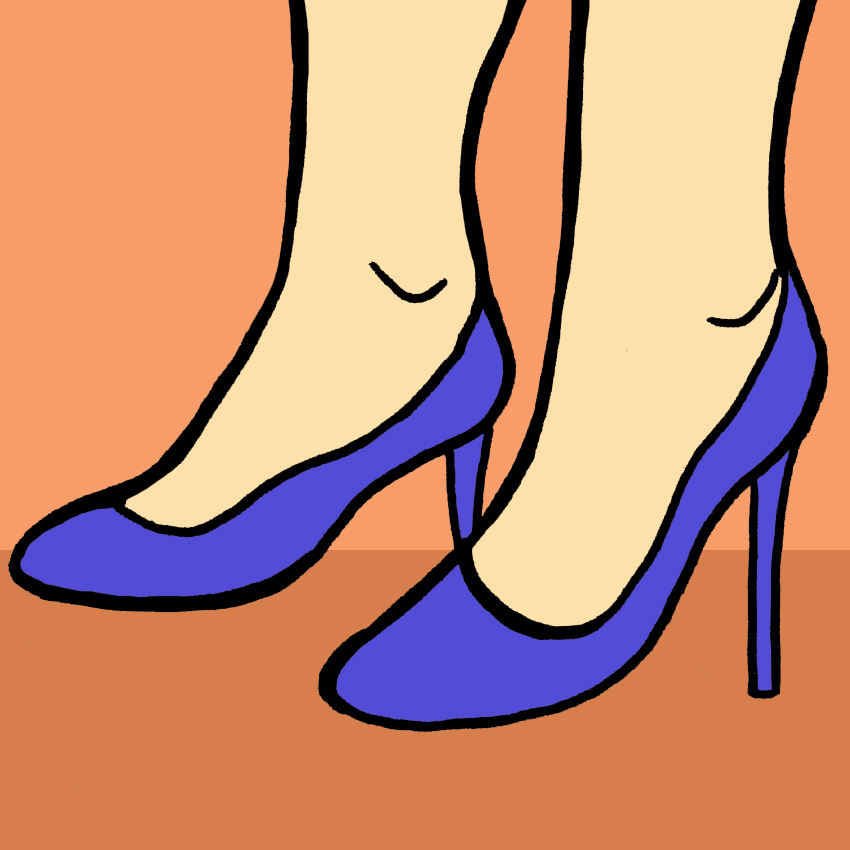
The most common cause of bunions is wearing the wrong shoes.
Wearing shoes that are too tight, or shoes like high heels that put a lot of strain on the ball of the foot, are the most common culprits. High heels are also why most cases of bunions occur in women.
Bunions are also genetic, so if someone in your family has them, you'll be more likely to get them, too.
Arthritic conditions, flat feet, and old age can also cause bunions.
How Can I Prevent And Manage Bunions? Bunion Tip #1: Exercise Your Feet
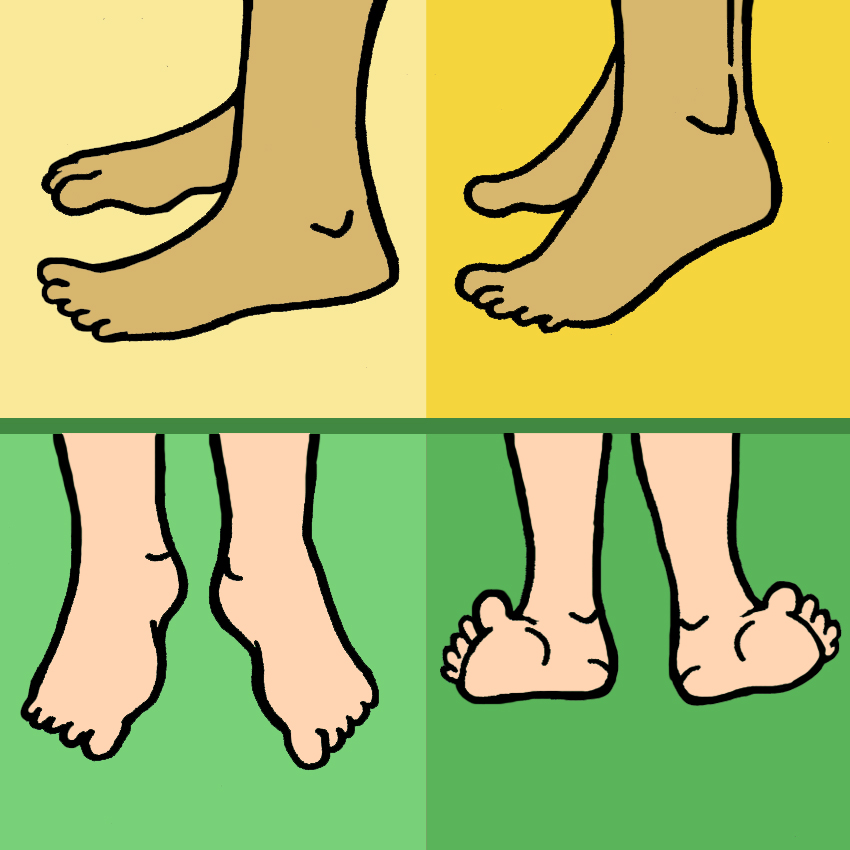
Keeping your feet limber and flexible is crucial to managing and preventing bunions — and a lot of other foot issues.
Foot exercises are also super easy. Take off your shoes and sit down. Lift your heels and hold for 10 seconds, and repeat 10 times.
Now lift only the balls of your feet and hold for 10 seconds, then repeat that 10 times.
It's super easy, and you can do it while you're reading, watching TV, or doing pretty much anything else!
Bunion Tip #2: Use A Hair Band
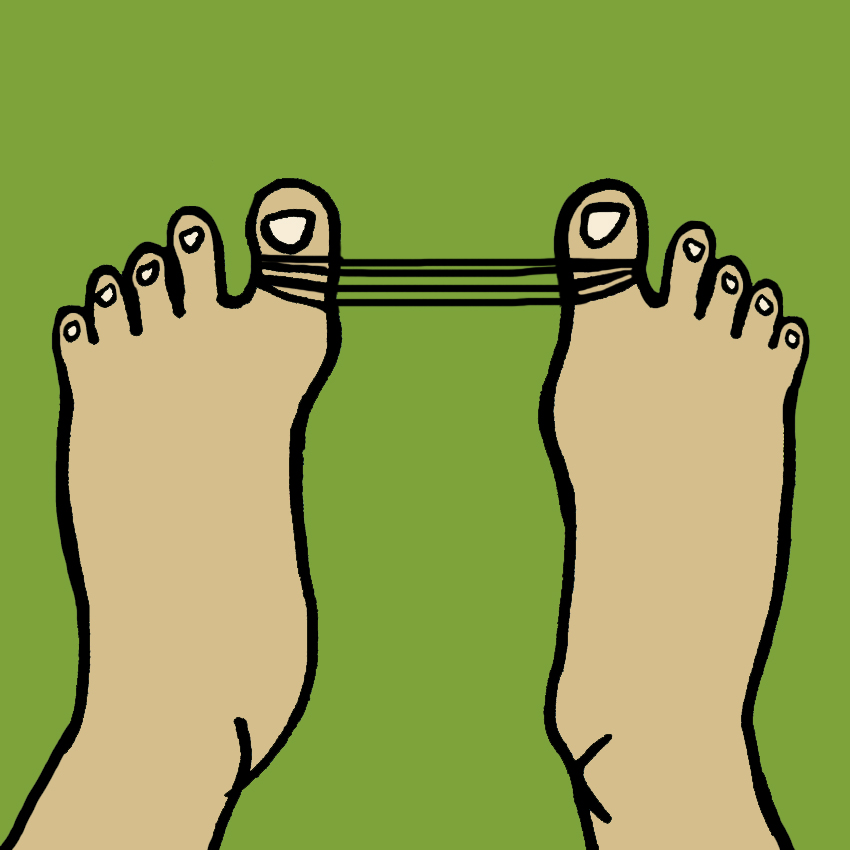
Hair bands are for more than just your hair.
Loop a strong hair elastic over your big toes, as shown above, and gently pull apart.
This will keep your toe joints straight and help them get relief from compression, especially if you've been wearing tight shoes all day.
We also recommend using a hair band rather than a rubber band, as rubber bands can potentially irritate the skin, and they snap more easily.
Bunion #3: Wear The Right Shoes
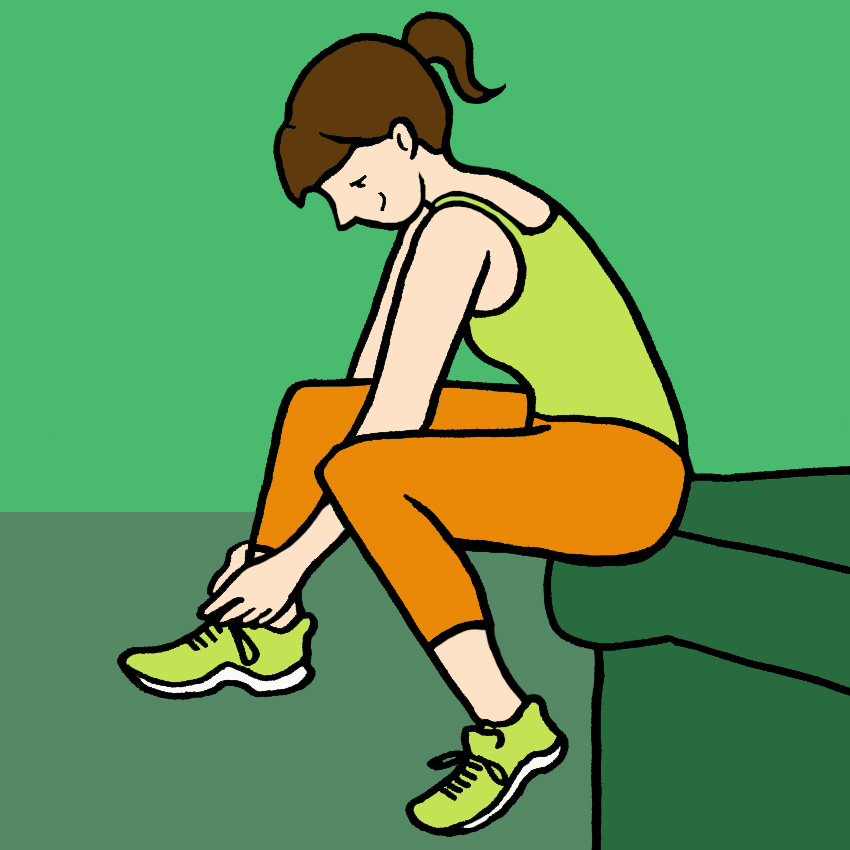
We all have that one pair of shoes that we love, but that maybe isn't the most comfortable pair. But if you're going to be out and about, a pair of shoes that fits correctly is a must.
A shoe should generally match the shape of your foot, have a broader toe area, and have soft soles. High heels and pointy toes are looks you'll want to avoid.
If your bunions make it difficult to find a pair of shoes that fits, consider looking into a wider shoe, or consult a podiatrist about the best options for your feet.
Bunion Tip #4: Protect Your Skin
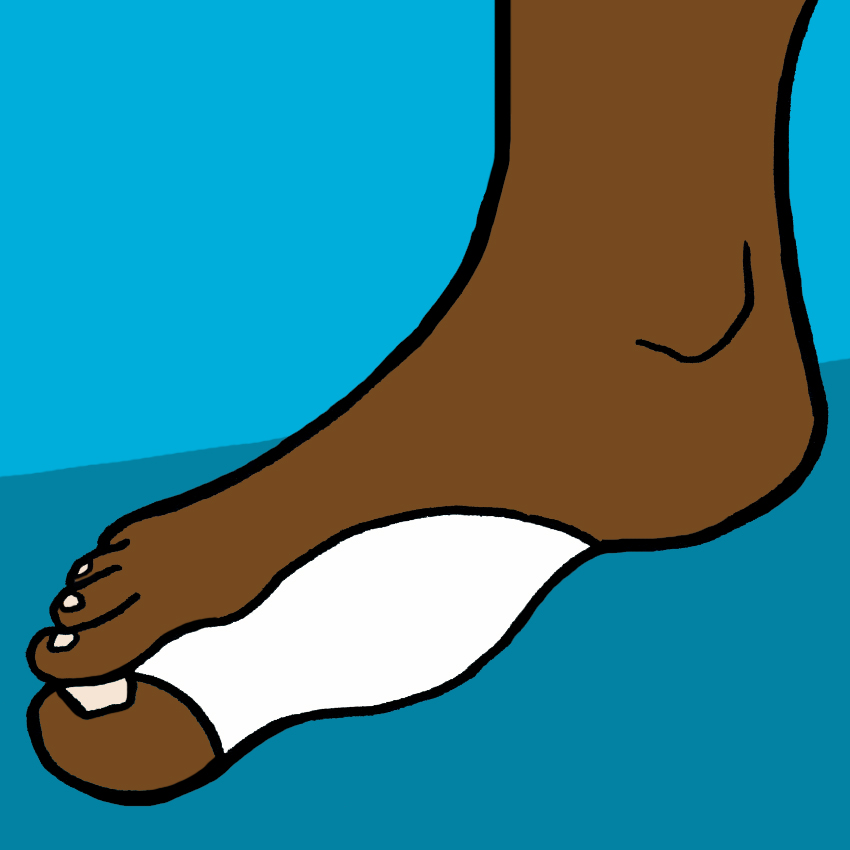
One of the most common symptoms of bunions is skin irritation and blistering.
This happens when the skin over the bunion rubs against the inside of a shoe, which can make the skin thickened, red, and tender.
If this happens, consider getting a bunion guard to protect your skin, especially if you're going to be walking in shoes for a long time.
Bunion Tip #5: Try A Toe Stretcher
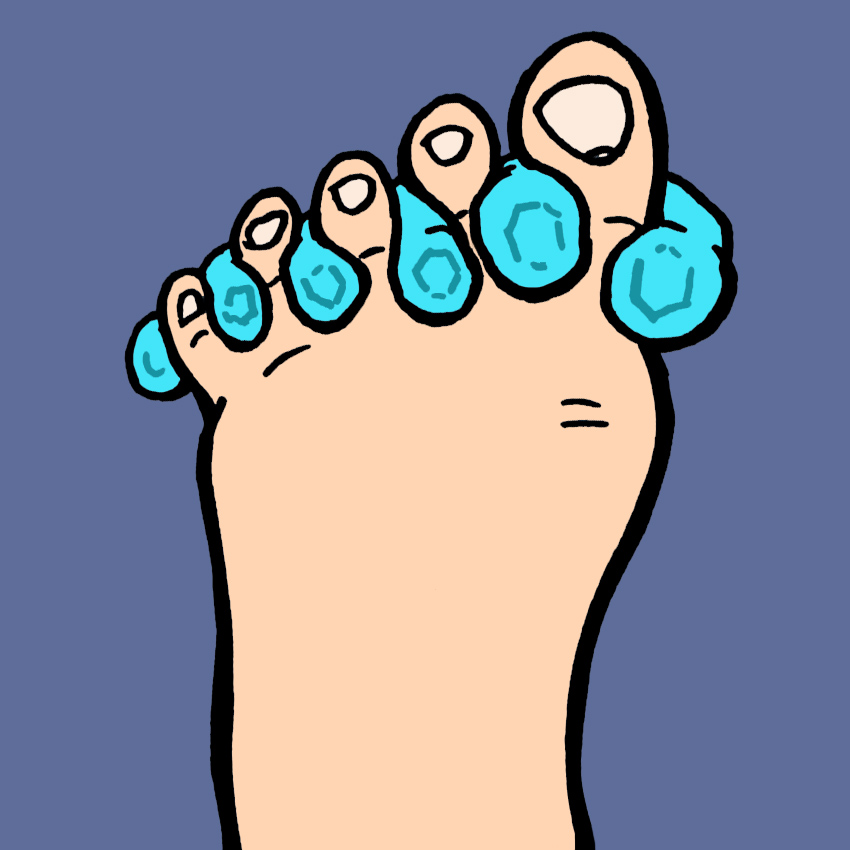
After a long day of cramped toes, a toe stretcher like this can provide serious relief. These stretchers help take strain off toe joints and realign them.
They can take some getting used to at first, but they help toes maintain mobility and comfort.
Plus they make it easy to give yourself a pedicure!
Bunion Tip #6: Give Your Tootsies A Massage
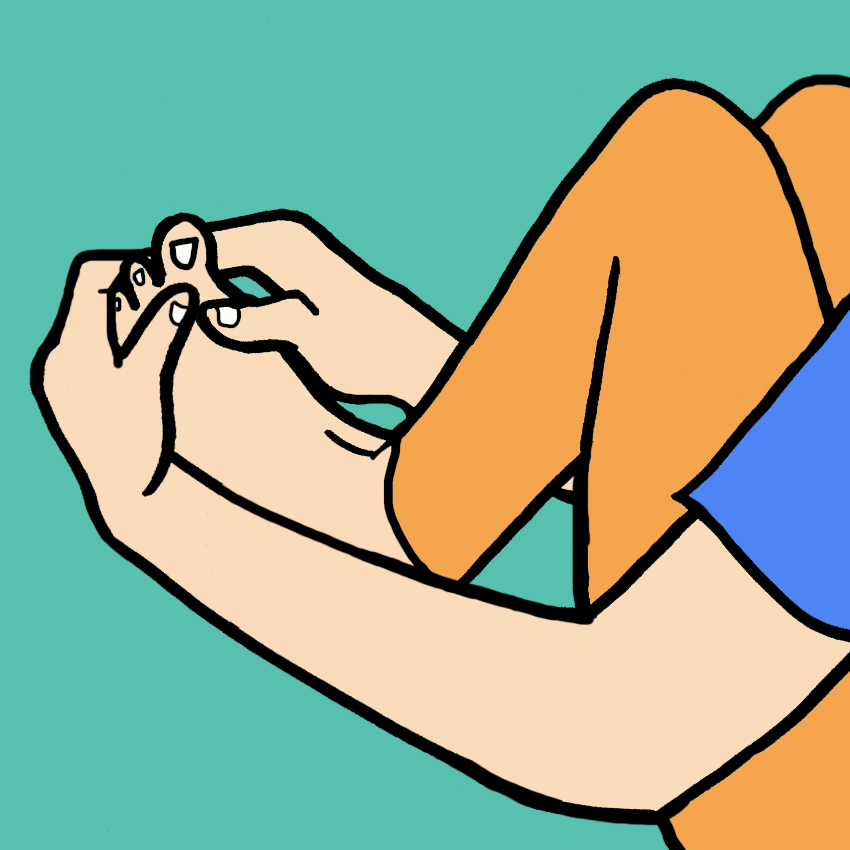
Massage is always helpful, and it can help with bunions, too.
To loosen the cramped-up muscle and connective tissue between the big and second toe, gently rub the space between the big and second toe bones. Don't press too hard!
When your big toe has been pushed toward your other toes, it can tighten up the muscles between them.
Massaging it loosens it up and frees up your big toe. And foot rubs are also super relaxing!
Bunion Tip #7: Ice The Area
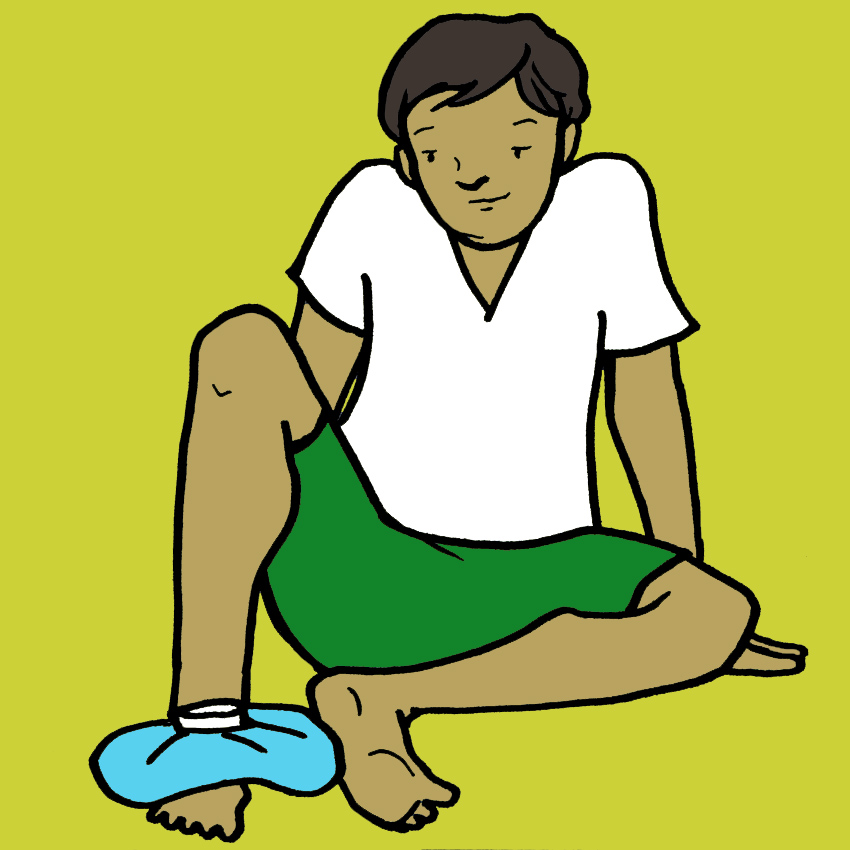
The stress of a bunion can cause swelling and aches in other areas of the foot, especially if your feet are overcompensating by walking in a different way.
If your feet are sore or swollen, apply a cold compress to the affected area two to three times a day.
This will not only feel better, but will also take excess strain off other areas of the foot.
Bunion Tip #8: Talk To Your Doctor
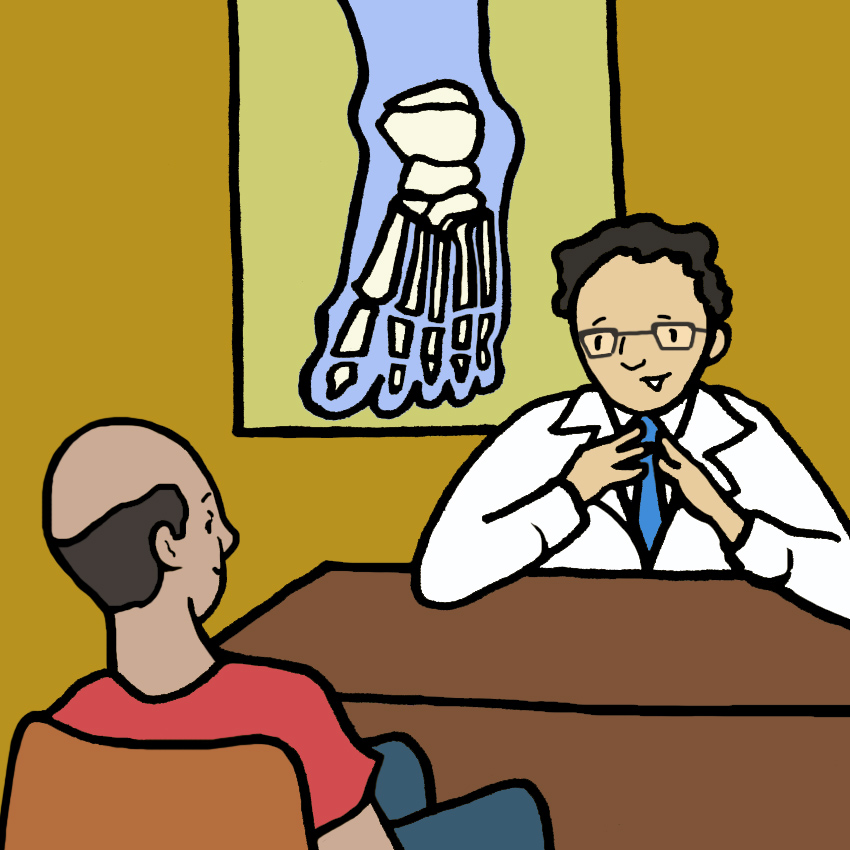
If nothing else is helping, or if a bunion is making everyday life difficult, you might want to talk to a doctor about other options.
They may suggest physical therapy. Or if things are severe enough, surgery to correct the joint position may be an option, too.
If you have achey feet, let us know your secrets for soothing them at the end of a long day, and SHARE to make someone else's feet a little more comfortable.



